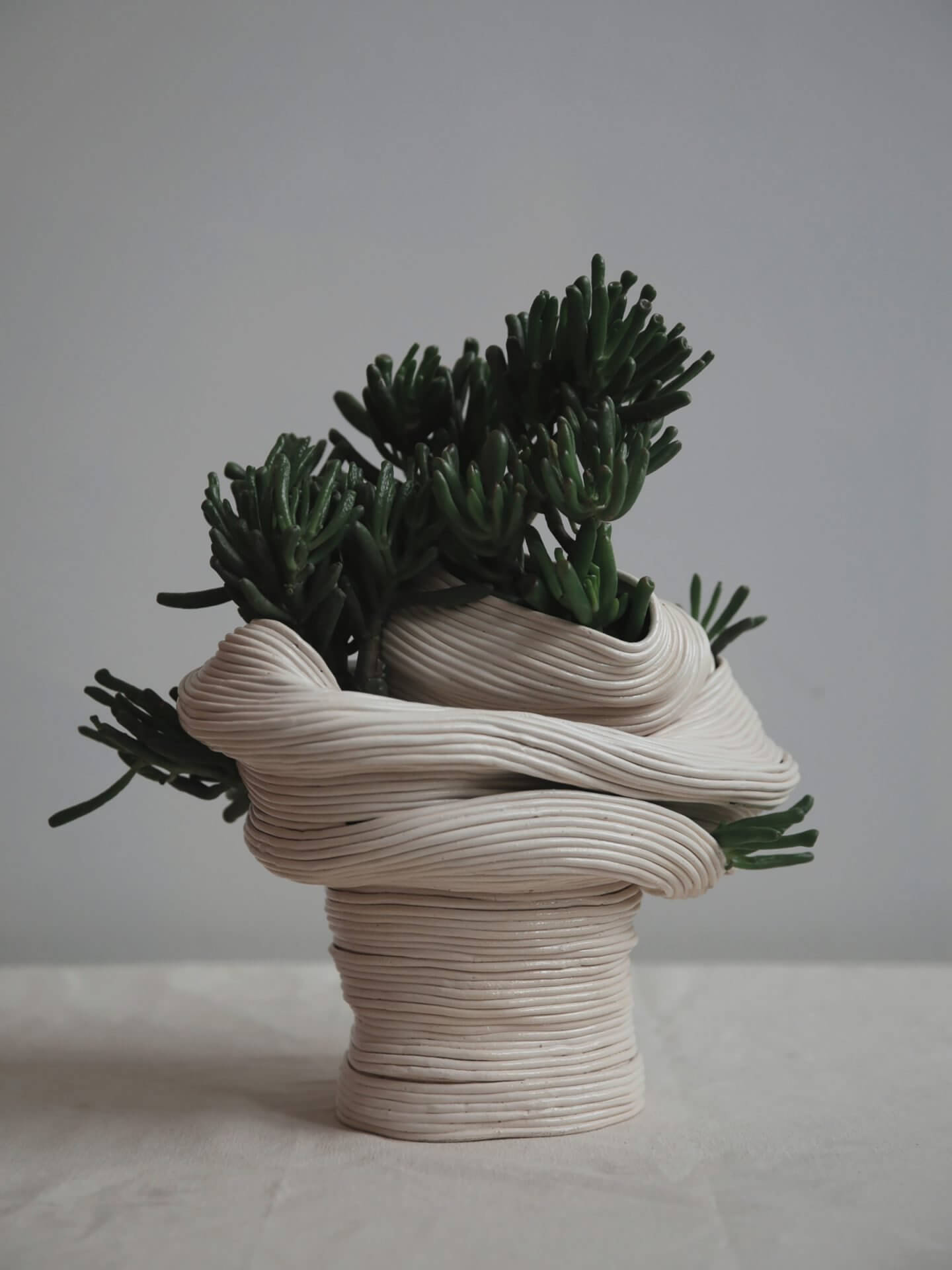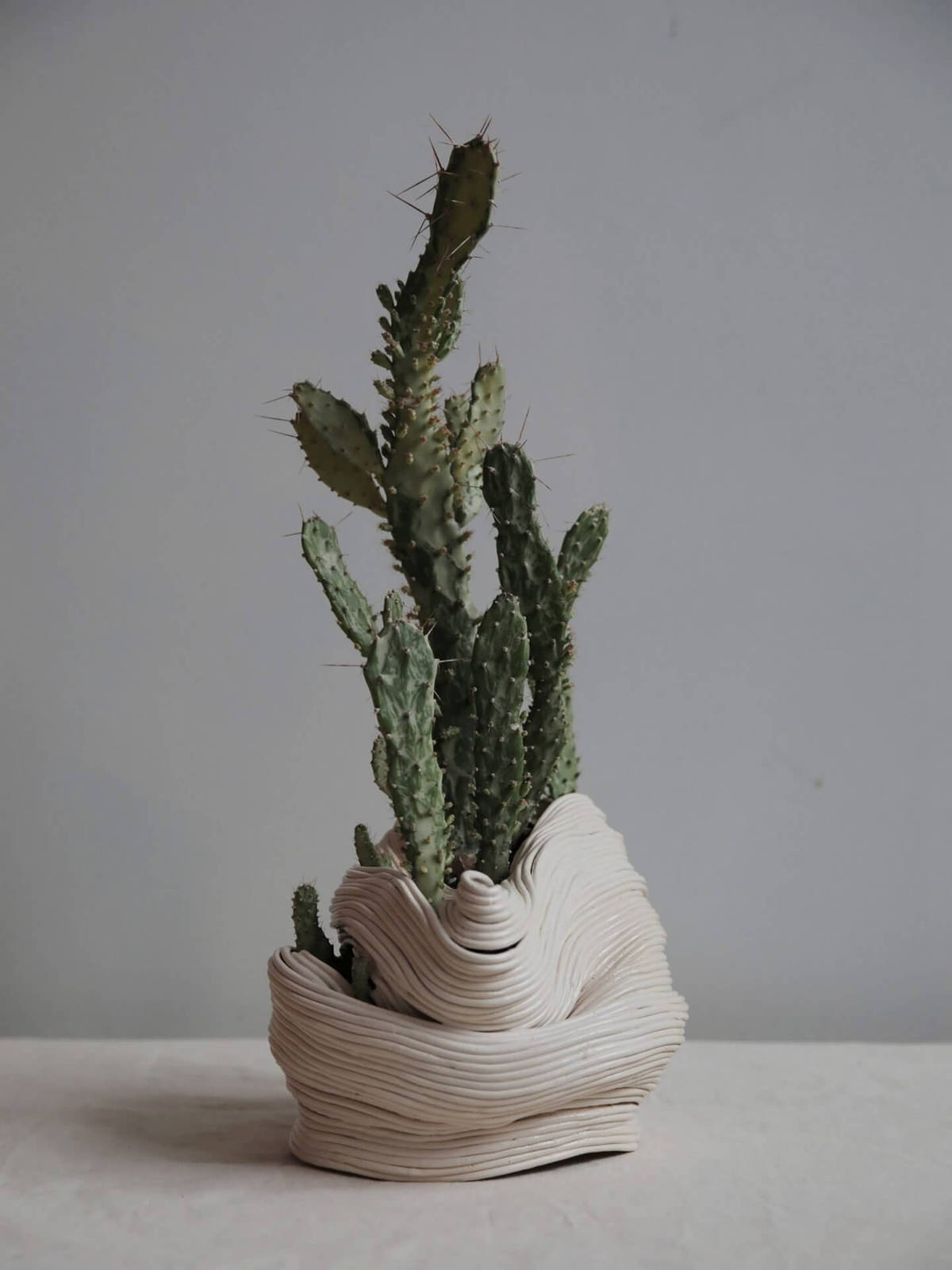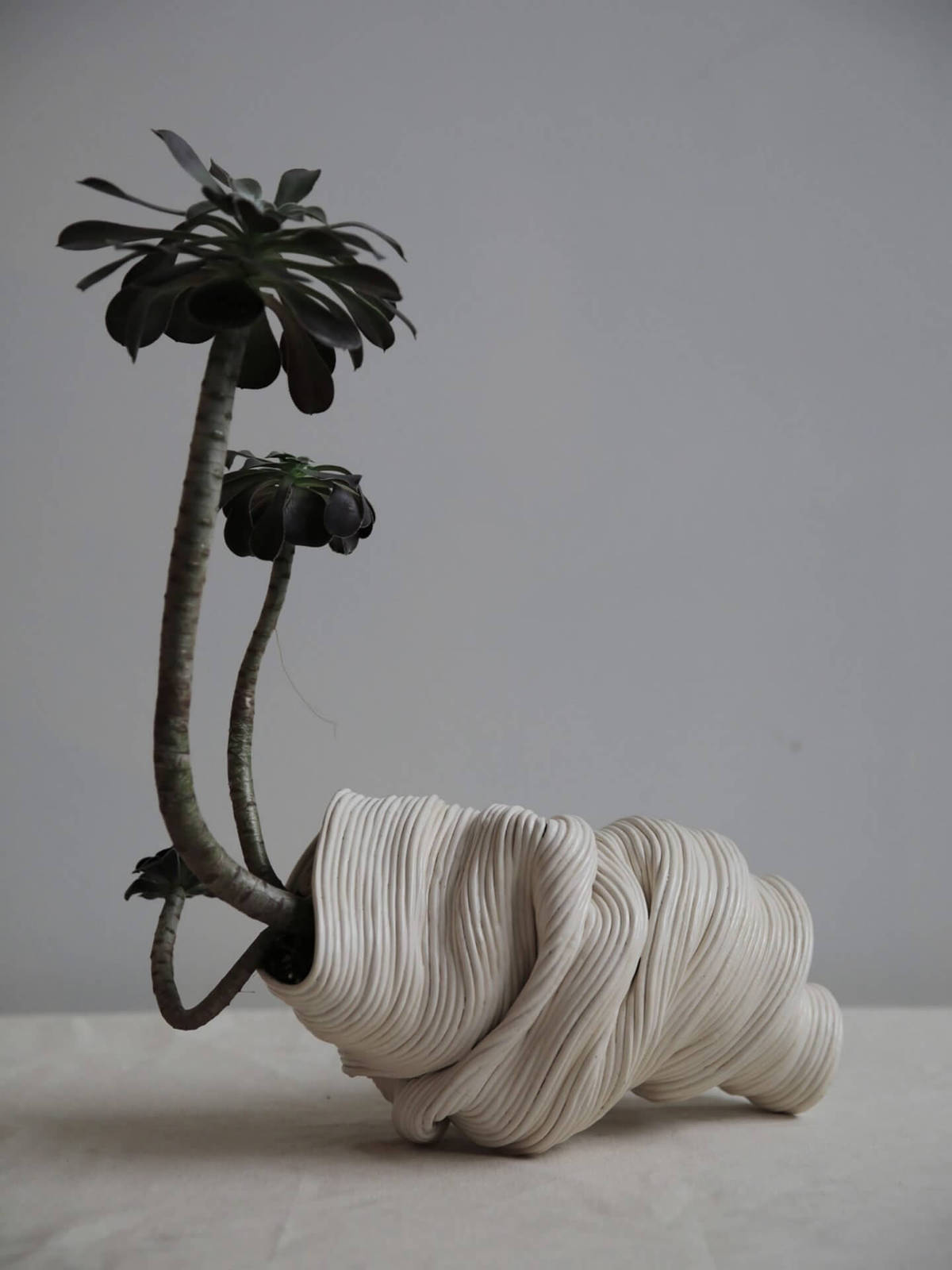Melbourne-based artist Rose Wei aka Zhu Ohmu — uses art to explore the connection between human and nature.
For the ceramic ‘Plantsukuroi’ set, the process of the 3D printer was mimicked by hands, unveiling a unique interpretation of machine procedures.
During the 3D printing process, ceramic vessels are often stacked, folded, pressed and pulled to match programmed measurements. Contrastingly, through the more tactile medium of hand-crafting, Rose managed to make each piece with abnormalities and greater participation in the crafting process.

“Unlike the machine, I can detect the smallest change in the properties of the clay body under different ecological states,” Rose explains. “This insight into plasticity and workability, which can only be gotten by spending some time with the physical matter through play and monitoring, lets me work with and control the material. In the absence of firmware or a mechanical procedure, no two vessels may be the same — that this endeavor is a celebration of the artist’s hand at the age of automation.”
“This project is really a celebration of the artist’s hand at the time of automation.”
Rose’s lack of instruction in ceramics highlights the experimentation in her procedure — leading to the natural forms of every boat. When using these methods, Rose shows that breakage usually occurs during the last phases. Nevertheless, these imperfections are essential as the final accents. The abnormalities add a charming personality to each thing and embrace the Japanese philosophy of wabi-sabi — the acceptance of transience and imperfection. Rose describes, “Further research motivated the project to adopt the practice of kintsukuroi — the art of mending broken pottery with gold lacquer. As the title of this project indicates, vegetation is utilized instead to fill and embellish the cracks; subsequently, the functions become living organisms and will develop and grow for years to come.”



